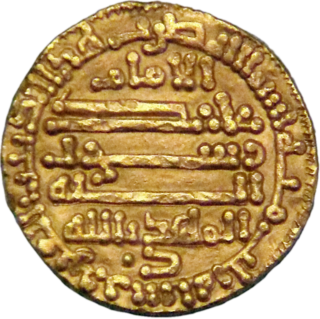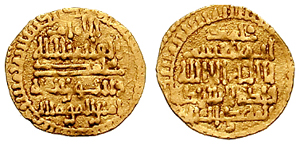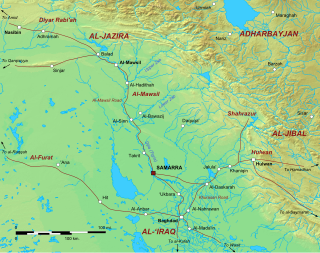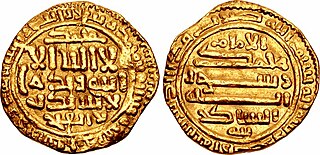Related Research Articles

Medieval Muslim Algeria was a period of Muslim dominance in Algeria during the Middle Ages, spanning the millennium from the 7th century to the 17th century. The new faith, in its various forms, would penetrate nearly all segments of society, bringing with it armies, learned men, and fervent mystics; in large part, it would replace tribal practices and loyalties with new social norms and political idioms.
The Kharijites, also called al-Shurat, were an Islamic sect which emerged during the First Fitna (656–661). The first Kharijites were supporters of Ali who rebelled against his acceptance of arbitration talks to settle the conflict with his challenger, Mu'awiya, at the Battle of Siffin in 657. They asserted that "judgment belongs to God alone", which became their motto, and that rebels such as Mu'awiya had to be fought and overcome according to Qur'anic injunctions. Ali defeated the Kharijites at the Battle of Nahrawan in 658, but their insurrection continued. Ali was assassinated in 661 by a Kharijite dissident seeking revenge for the defeat at Nahrawan.

The Barghawatas were a Berber tribal confederation on the Atlantic coast of Morocco, belonging to the Masmuda confederacy. After allying with the Sufri Kharijite rebellion in Morocco against the Umayyad Caliphate, they established an independent state in the area of Tamesna on the Atlantic coast between Safi and Salé under the leadership of Tarif al-Matghari.

Abū Muḥammad ʿAbd Allāh ibn al-Ḥusayn, better known by his regnal name al-Mahdī biʾllāh, was the founder of the Isma'ili Fatimid Caliphate, the only major Shi'a caliphate in Islamic history, and the eleventh Imam of the Isma'ili branch of Shi'ism.
The Zenata are a group of Berber tribes, historically one of the largest Berber confederations along with the Sanhaja and Masmuda. Their lifestyle was either nomadic or semi-nomadic.

Sijilmasa was a medieval Moroccan city and trade entrepôt at the northern edge of the Sahara in Morocco. The ruins of the town extend for five miles along the River Ziz in the Tafilalt oasis near the town of Rissani. The town's history was marked by several successive invasions by Berber dynasties. Up until the 14th century, as the northern terminus for the western trans-Sahara trade route, it was one of the most important trade centres in the Maghreb during the Middle Ages.
Ziri ibn Manad or Ziri son of Mennad was the founder of the Zirid dynasty in the Maghreb.

Abū al-Qāsim Muḥammad ibn ʿAbd Allāh, better known by his regnal name al-Qāʾim (القائم) or al-Qāʾim bi-Amr Allāh, was the second caliph of the Fatimid dynasty, ruling in Ifriqiya from 934 to 946. He was the twelfth Isma'ili Imam, succeeding his father Abd Allah al-Mahdi Billah.

The Idrisid dynasty or Idrisids were an Arab Muslim dynasty from 788 to 974, ruling most of present-day Morocco and parts of present-day western Algeria. Named after the founder, Idris I, the Idrisids were an Alid dynasty descended from Muhammad through his grandson Hasan. Their reign played an important role in the early Islamization of Morocco and also presided over an increase in Arab immigration and Arabization in major urban centers.

Ibrahim I ibn al-Aghlab was the first Emir of the Ifriqiya from Aghlabid family (800-812).
Ali ibn Umar was the seventh Idrisid ruler of Morocco.
Yahya IV or Yahya ibn Idris ibn Umar was an Idrisid ruler of Morocco, ruling in Fes from 905 to 922. For the last three years of his reign, he acknowledged the overlordship of the Fatimid Caliphate, until he was deposed by the Fatimid general Masala ibn Habus. He died in exile at the Fatimid capital of al-Mahdiya in 946.
Abu Imran Musa ibn Isa ibn Abi 'l-Hajjal-Fasi was a Moroccan Maliki faqīh born at Fez to a Berber or Arab family whose nisba is impossible to reconstruct.

The History of early Islamic Tunisia opens with the arrival of the Arabs who brought their language and the religion of Islam, and its calendar. The Arab conquest followed strategy designed by the Umayyad Caliphate regarding its long-term conflict with the Byzantine Empire. The native Berbers eventually converted to Islam. They might have seen some similarities between themselves and the Arabs, in similar cognate culture, such as familiarity with a pastoral way of life. The first local Islamic ruling house, the Aghlabids, consisted primarily of rule by leading members of this Arab tribe. Fundamental elements of Islamic civilization were established. Although accepting Islam, many Berbers nonetheless resisted rule by the Arabs, establishing the Rustamid kingdom following the Kharijite revolt. Next in Ifriqiya (Tunisia) arose the Shia Fatimids, inspired by a few immigrants from the east yet consisting for the most part of Ifriqiya Berbers. The Fatimids later expanded their rule east, through conquest by Berber armies of Egypt, and established their caliphate there which came to include Syria and the Hejaz.

The Kharijite Rebellion was a major Kharijite uprising against the Abbasid Caliphate between 866 and 896. Centered in the districts of Mosul and Diyar Rabi'a in the province of al-Jazira, the rebellion lasted for approximately thirty years, despite numerous attempts by both the central government and provincial authorities to quell it. It was finally defeated in 896 after the caliph al-Mu'tadid undertook several campaigns to restore caliphal authority in the region.

The Midrarid dynasty was a Berber dynasty that ruled the Sijilmasa region in Morocco from their capital of Sijilmasa, starting in the late 8th or early 9th century to 976/7.
The Ifranid Emirate of Tlemcen or Ifranid Kingdom of Tlemcen, was a Kharijite state, founded by Berbers of the Banu Ifran in the eighth century, with its capital at Tlemcen in modern Algeria.
Mu'sab ibn al-Zubayr ibn al-Awwam was the governor of Basra in 686–691 for his brother, the Mecca-based counter-caliph Abd Allah ibn al-Zubayr, during the Second Fitna. Mus'ab was a son of Zubayr ibn al-Awwam, a prominent companion of the Islamic prophet Muhammad. Before becoming governor, he led an unsuccessful campaign against Umayyad-held Palestine. He defeated and killed the pro-Alid revolutionary Mukhtar al-Thaqafi after a series of battles in 687, gaining control over all of Iraq. Complaints from the Iraqis caused his removal from office by his brother, but he was restored shortly after. He was killed by Umayyad forces led by the caliph Abd al-Malik in the Battle of Maskin four years later.

Muhammad ibn al-Fath Wasul ibn Maymun al-Amir was the tenth Midrarid emir of Sijilmasa. He was the first Midrarid ruler to adopt Maliki Sunni Islam.
Abu'l-Qasim Samgu ibn Wasul al-Miknasi was a Miknasa Berber leader who according to tradition founded the oasis town of Sijilmasa and became its second ruler.